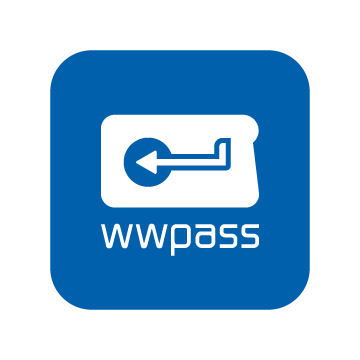
multi factor authentication https://www.wwpass.com/multi-factor-authentication Multi factor authentication (MFA) has become a cornerstone of contemporary cybersecurity, addressing the critical weaknesses of passwords alone. As digital services proliferate and threat actors refine their techniques, relying on single-factor authentication creates unacceptable risk. MFA introduces additional layers of proof, combining knowledge, possession, and inherence factors to confirm a user’s identity. This article examines the principles behind MFA, the common implementations in use today, practical benefits, challenges of deployment, and guidance for designing user-friendly, resilient authentication flows.
At its core, multi factor authentication requires the presentation of two or more independent credentials. These credentials typically fall into three categories: something you know (like a password or PIN), something you have (such as a hardware token, smartphone, or smart card), and something you are (biometrics like fingerprint, facial recognition, or behavioral patterns). By requiring multiple, distinct proofs of identity, MFA reduces the probability that an attacker can breach an account even if one factor is compromised. Implementing MFA effectively demands careful selection of factors, attention to usability, and integration with existing identity and access management systems.
Common implementations of MFA include one-time passwords (OTPs) delivered via SMS, email, or generated by authenticator apps; push notifications to mobile devices that allow users to approve or deny login attempts; hardware tokens or smartcards that perform cryptographic operations; biometric verification embedded in devices; and more advanced methods like FIDO2/WebAuthn standards that enable passwordless authentication using public-key cryptography. Each method carries trade-offs between security, cost, and user convenience. For example, SMS OTPs are widespread and easy to implement but vulnerable to SIM swapping and interception, while hardware-backed and cryptographic approaches offer stronger guarantees at higher implementation cost.
Benefits of MFA extend beyond preventing unauthorized access. It mitigates credential stuffing, reduces the impact of stolen passwords, and helps organizations comply with regulatory requirements and security frameworks. MFA can strengthen remote access solutions, protect privileged accounts, and serve as part of a zero trust architecture where continuous verification is required. From a business perspective, reducing account takeover incidents lowers remediation costs, preserves customer trust, and protects brand reputation. Moreover, MFA adoption signals a commitment to security that can be crucial in sectors handling sensitive personal or financial data.

Despite its advantages, MFA implementation is not without challenges. User friction is a common concern: additional steps during login can frustrate users unless the experience is streamlined. Accessibility issues arise when some users lack compatible devices or have disabilities that make certain authentication modes difficult. There are also operational considerations: provisioning and managing tokens, handling lost devices, and supporting recovery flows without introducing weak alternative paths that attackers can exploit. Organizations must balance security with usability by offering multiple, secure options and clear support processes for users who lose access to a factor.
Designing a secure recovery and fallback strategy is crucial. Recovery mechanisms that are too permissive can undermine the security benefits of MFA. Effective recovery often combines identity verification through multiple channels, temporary time-limited tokens, and human-in-the-loop checks for high-risk accounts. Risk-based authentication can be useful here: adjusting requirements based on device reputation, geolocation, behavior patterns, and the sensitivity of requested resources. When combined with MFA, adaptive approaches help maintain a smooth user experience while escalating verification for anomalous or risky access attempts.
Integration considerations include compatibility with single sign-on (SSO) systems, identity providers (IdPs), and federation protocols such as SAML, OAuth, and OpenID Connect. Enterprises should evaluate vendor solutions for interoperability with existing directories and MFA management consoles that centralize policy enforcement and reporting. Logging and monitoring of authentication events are essential for detecting suspicious patterns, conducting forensics, and meeting compliance mandates. Encryption and secure handling of any stored secrets or biometric templates are fundamental to preserving privacy and preventing credential theft.
From a technical standpoint, modern MFA solutions increasingly favor cryptographic, phishing-resistant methods. WebAuthn and FIDO2 enable passwordless or second-factor authentication using device-bound keys and public-private cryptography. These standards reduce reliance on shared secrets and are resistant to man-in-the-middle attacks and phishing because private keys never leave the user’s device. Implementing such solutions provides strong defense-in-depth but requires attention to device support, enrollment workflows, and the user onboarding process to ensure broad adoption.

For organizations planning MFA rollout, several practical steps improve success rates. Start with risk assessment and inventory of critical systems and high-value accounts. Prioritize MFA for remote access, administrative consoles, and any application handling sensitive information. Pilot with a subset of users to collect feedback and tune the enrollment and support processes. Provide clear user education materials about why MFA matters, how to set it up, and how to handle common issues. Offer multiple authentication options to accommodate diverse user needs while maintaining baseline security standards.
Cost and operational overhead can be managed through phased deployment and vendor selection. Cloud-based MFA providers reduce infrastructure burden by offering scalable services with APIs for integration. However, relying on third-party services requires due diligence around data handling, availability guarantees, and vendor security posture. For highly regulated environments, on-premises or hybrid models may be appropriate, enabling tighter control over authentication data and compliance with specific legal requirements.
Measuring the effectiveness of MFA initiatives involves tracking adoption metrics, changes in account compromise incidents, and user support volumes related to authentication. Security teams should correlate MFA-related logs with threat intelligence to detect targeted campaigns and refine conditional access policies. Continuous evaluation and periodic reassessment of authentication factors ensure the organization adapts to evolving attacker tactics and emerging technologies like decentralized identity systems and biometric advancements.
Looking forward, the landscape of identity verification will continue to shift toward more seamless, privacy-preserving, and phishing-resistant methods. Passwordless approaches and hardware-backed keys are likely to gain momentum, especially as broad browser and operating system support expands. Biometric modalities will remain important but should be combined with other factors and governed carefully to protect user privacy. Ultimately, multi factor authentication is not a single product but an architectural approach: a flexible set of controls that, when thoughtfully deployed, significantly raise the barrier for attackers while enabling secure access to digital resources.
In conclusion, multi factor authentication is an essential element of any modern security strategy. It reduces reliance on fragile password mechanisms, provides robust protection for sensitive assets, and supports compliance objectives. Successful MFA deployment requires balancing security, usability, and operational considerations, selecting phishing-resistant technologies where possible, and maintaining clear recovery and support processes. By approaching MFA as part of a broader identity and access management program, organizations can effectively protect users and data in an increasingly hostile digital environment.